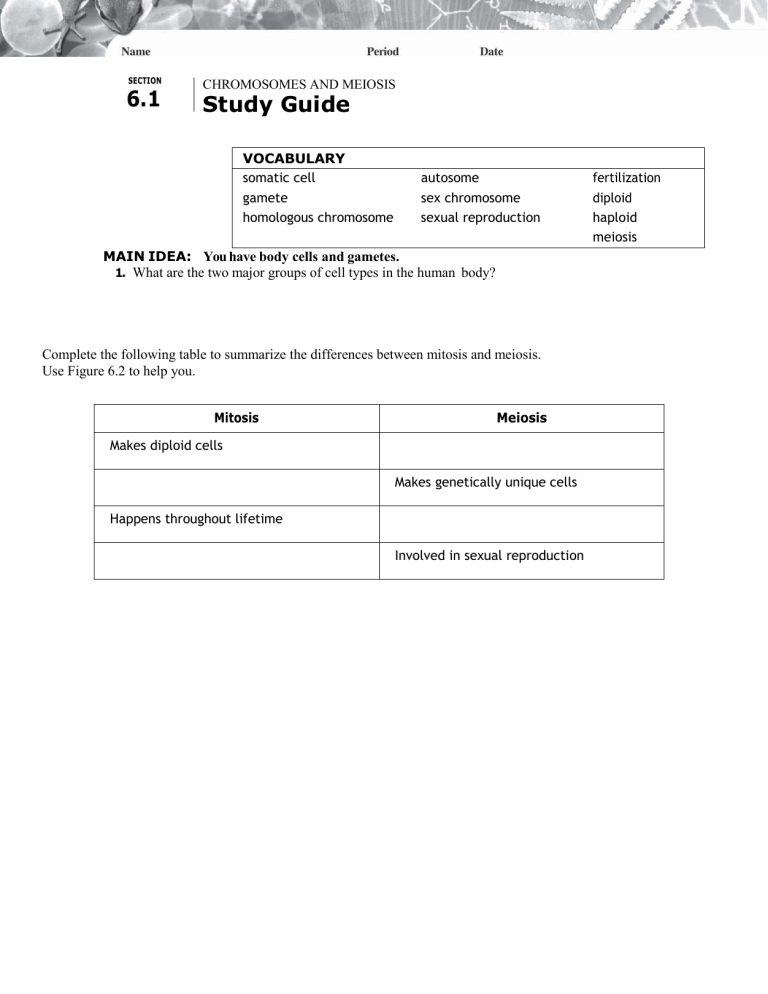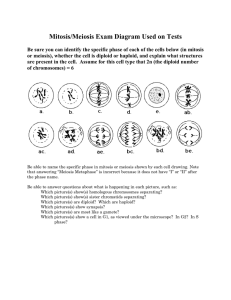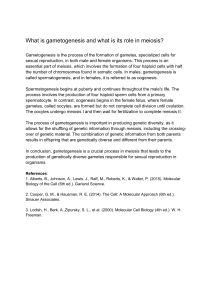
SECTION 6.1 CHROMOSOMES AND MEIOSIS Study Guide VOCABULARY somatic cell gamete homologous chromosome autosome sex chromosome sexual reproduction MAIN IDEA: You have body cells and gametes. 1. What are the two major groups of cell types in the human body? Complete the following table to summarize the differences between mitosis and meiosis. Use Figure 6.2 to help you. Mitosis Meiosis Makes diploid cells Makes genetically unique cells Happens throughout lifetime Involved in sexual reproduction fertilization diploid haploid meiosis STUDY GUIDE, CONTINUED 11. What does a sperm cell contribute to an embryo? 12. What does an egg contribute to an embryo? 13. Where are polar bodies made, in the male or in the female? Complete the diagram of gametogenesis in the boxes below. Use Figure 6.6 to help you. Refer to Figure 6.6 for visual answers Spe rm Fo rmatio n Egg Fo rmatio n Vocabulary Check 14. Genesis comes from a Greek word that means “to be born.” How does this relate to the meaning of gametogenesis? . 15. What is a polar body? 6 Study Guide Unit 3 Resource Book McDougal Littell Biology Copyright © McDougal Littell/Houghton Mifflin Company. CHAPTER 6 Meiosis and Mendel MAIN IDEA: Haploid cells develop into mature gametes. MAIN IDEA: Your cells have autosomes and sex chromosomes. Fill in the concept map below to summarize what you know about chromosomes






